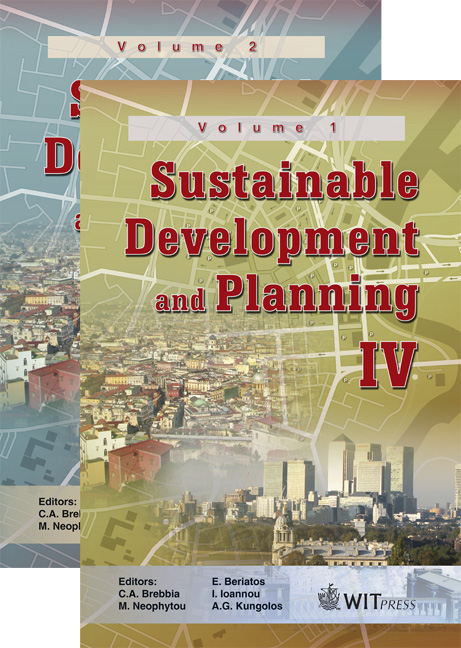Hierarchies Of Sustainability In A Catchment
Price
Free (open access)
Transaction
Volume
120
Pages
7
Page Range
635 - 641
Published
2009
Size
164 kb
Paper DOI
10.2495/SDP090592
Copyright
WIT Press
Author(s)
N. Dunstan
Abstract
This paper investigates notions of sustainability in a catchment area represented by a multidimensional spatial data set. Predictive catchment Land Use, Cover and Change (LUCC) models simulate the environmental and economic effects of land use over time. These predictions can be used to form a data cube of aggregated data tables, where the aggregation measures indicate issues of sustainability across different data dimensions and at different levels of summarization.As well as a global (or catchment-wide) concept of sustainability, measures of sustainability can be provided by region, farmer, land use, and other data dimensions. A hierarchy of sustainability is apparent when data dimensions are hierarchical. Keywords: Land Use Cover and Change models, sustainability indicators, data cubes, decision support, discovery-driven exploration, catchment management. 1 Introduction Catchments are complex systems of inter-related elements. Park and Alexander [1] refer to economic, environmental and social sustainability in a catchment. Brown [6] describes knowledge resources for decision-making in the context of complex sustainability problems. Scott [12] lists over 30 sustainability indicators for wholefarm sustainability. Li et al. [8] used 12 variables to assess region sustainability in a catchment. Land use, Cover and Change (LUCC) models have been widely used to predict the affects of land use (e.g. Beverly et al. [2]) and to provide support for catchment management and planning (e.g. Choi and Deal [7], McColl and Aggett [10]). Catchment models are typically based on principles of hydrology and land use economics. These principles are applied to a grid of blocks representing the catchment at a certain spatial resolution. Land use, rainfall, ground water salinity, depth of ground water table and other data are stored for each block of land.
Keywords
Land Use Cover and Change models, sustainability indicators, data cubes, decision support, discovery-driven exploration, catchment management.





